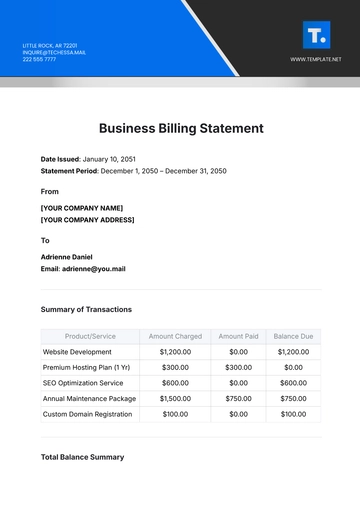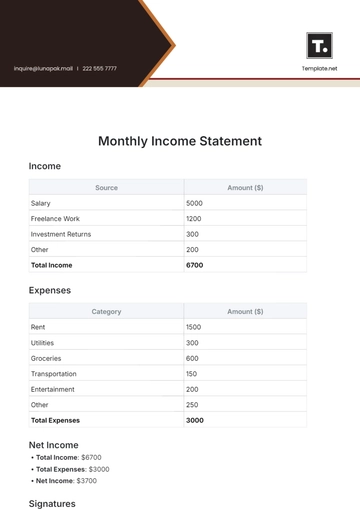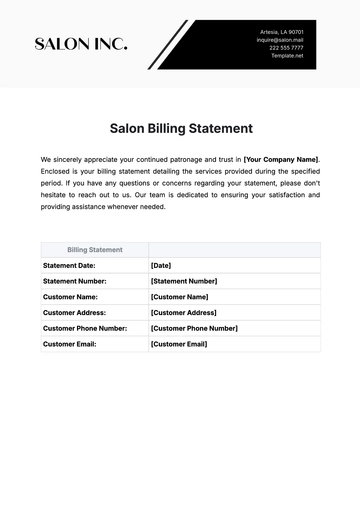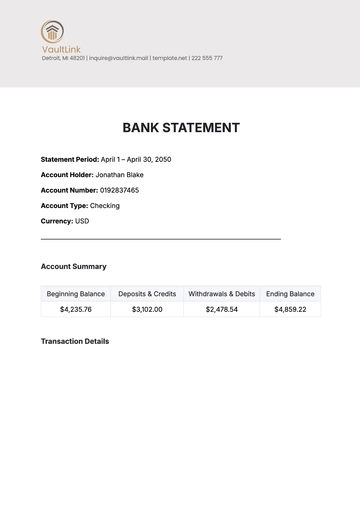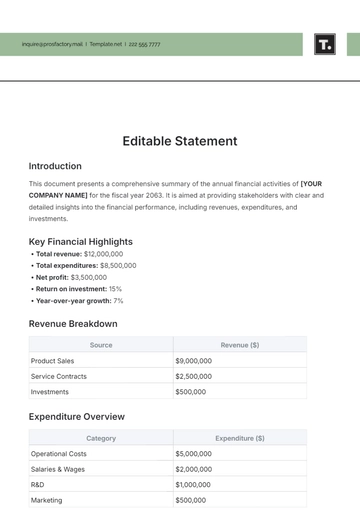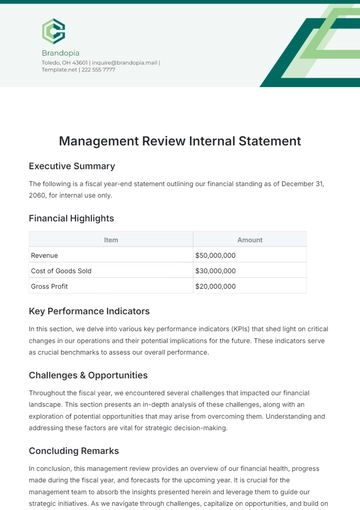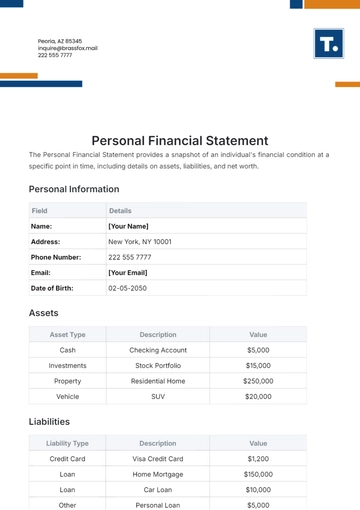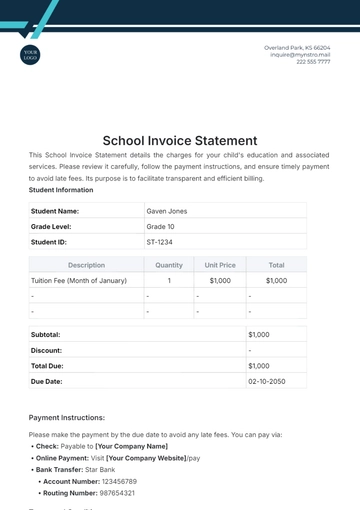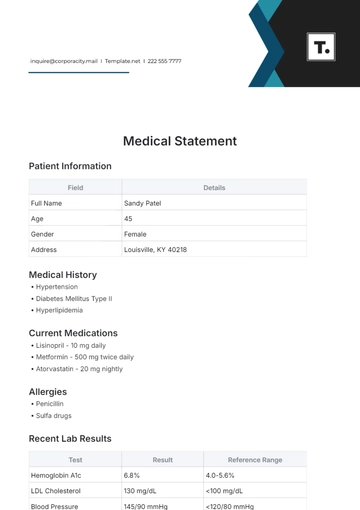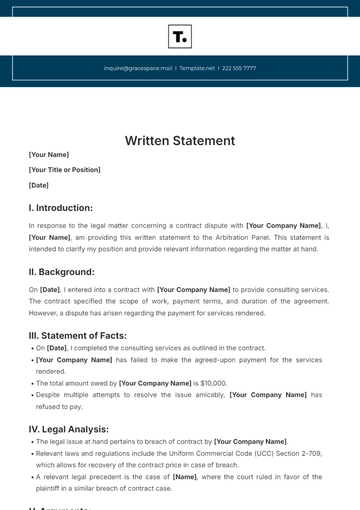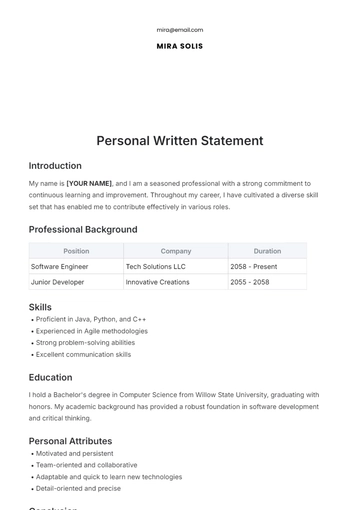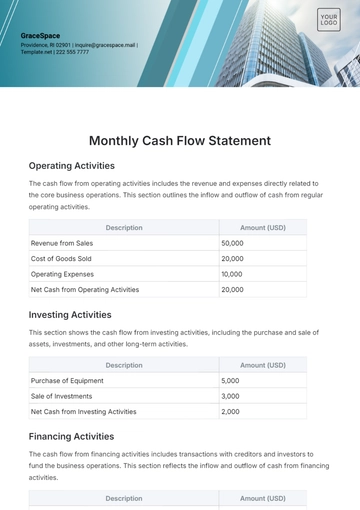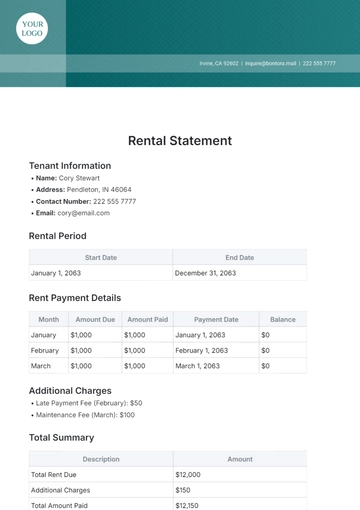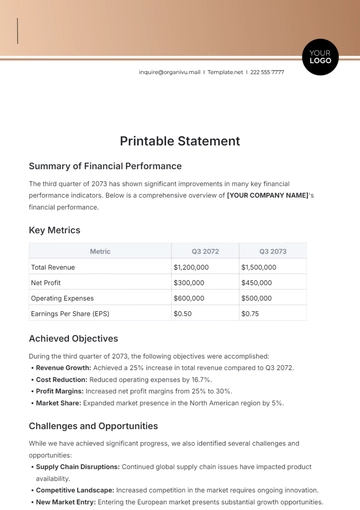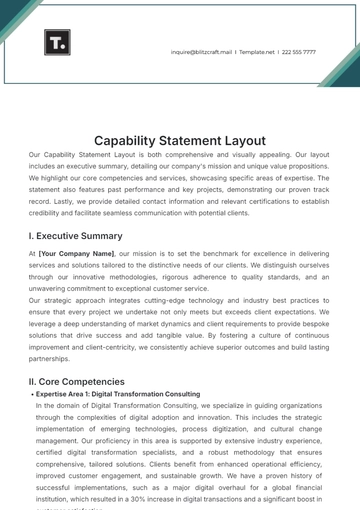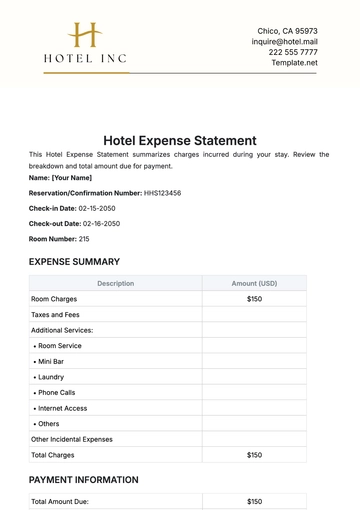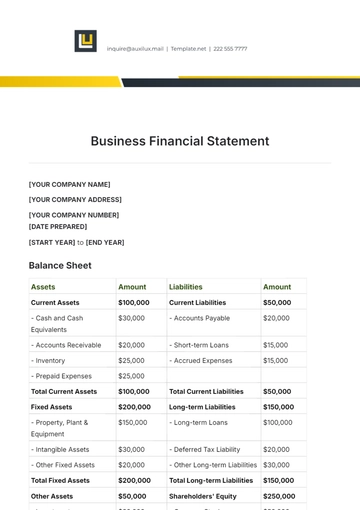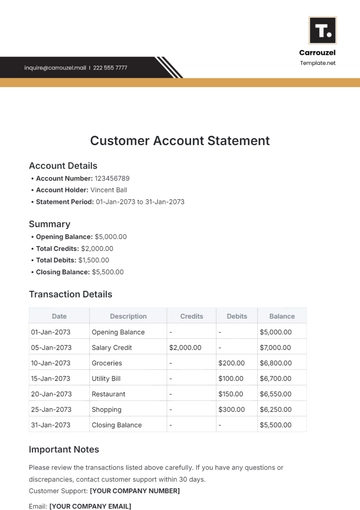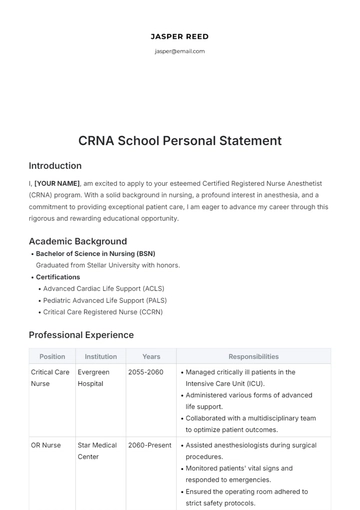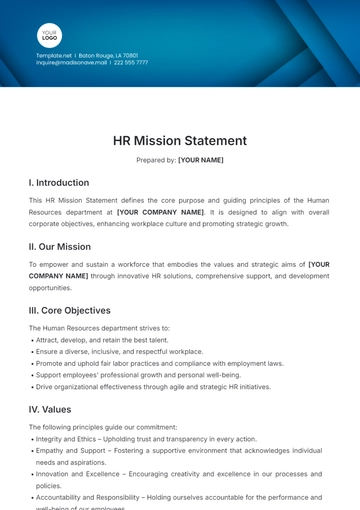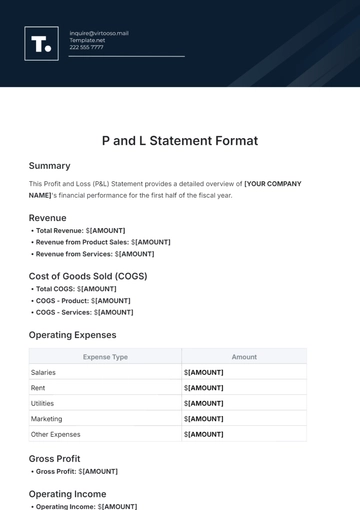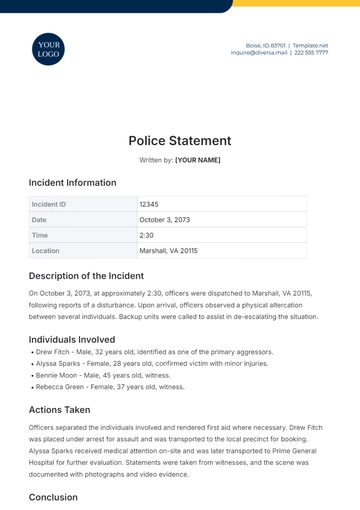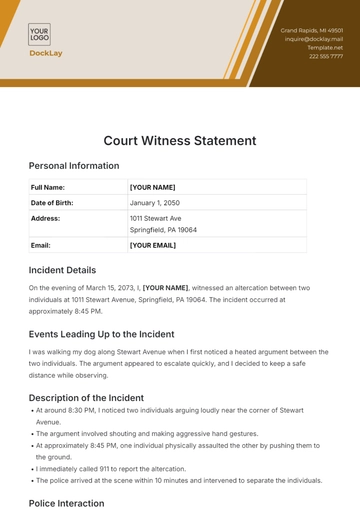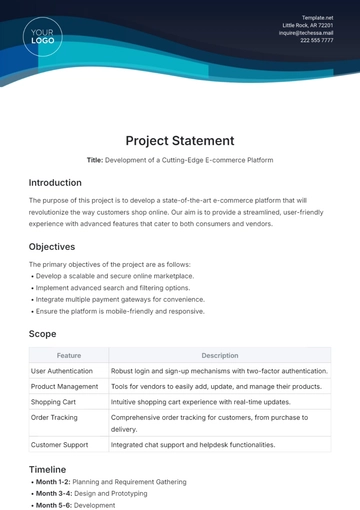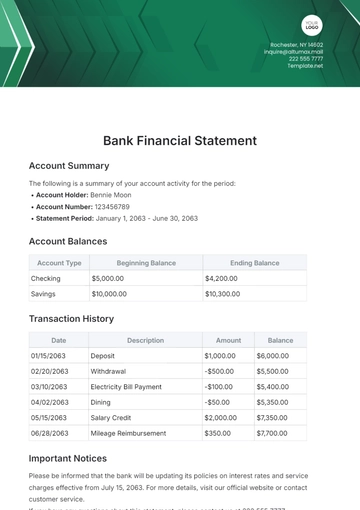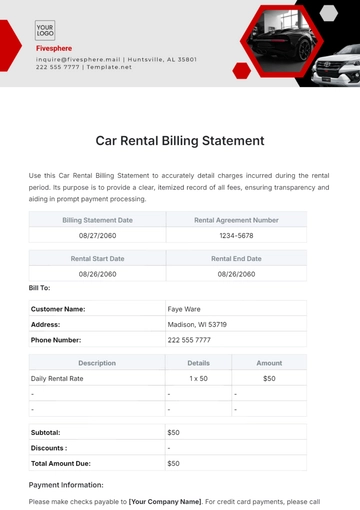Free Fire Safety Statement
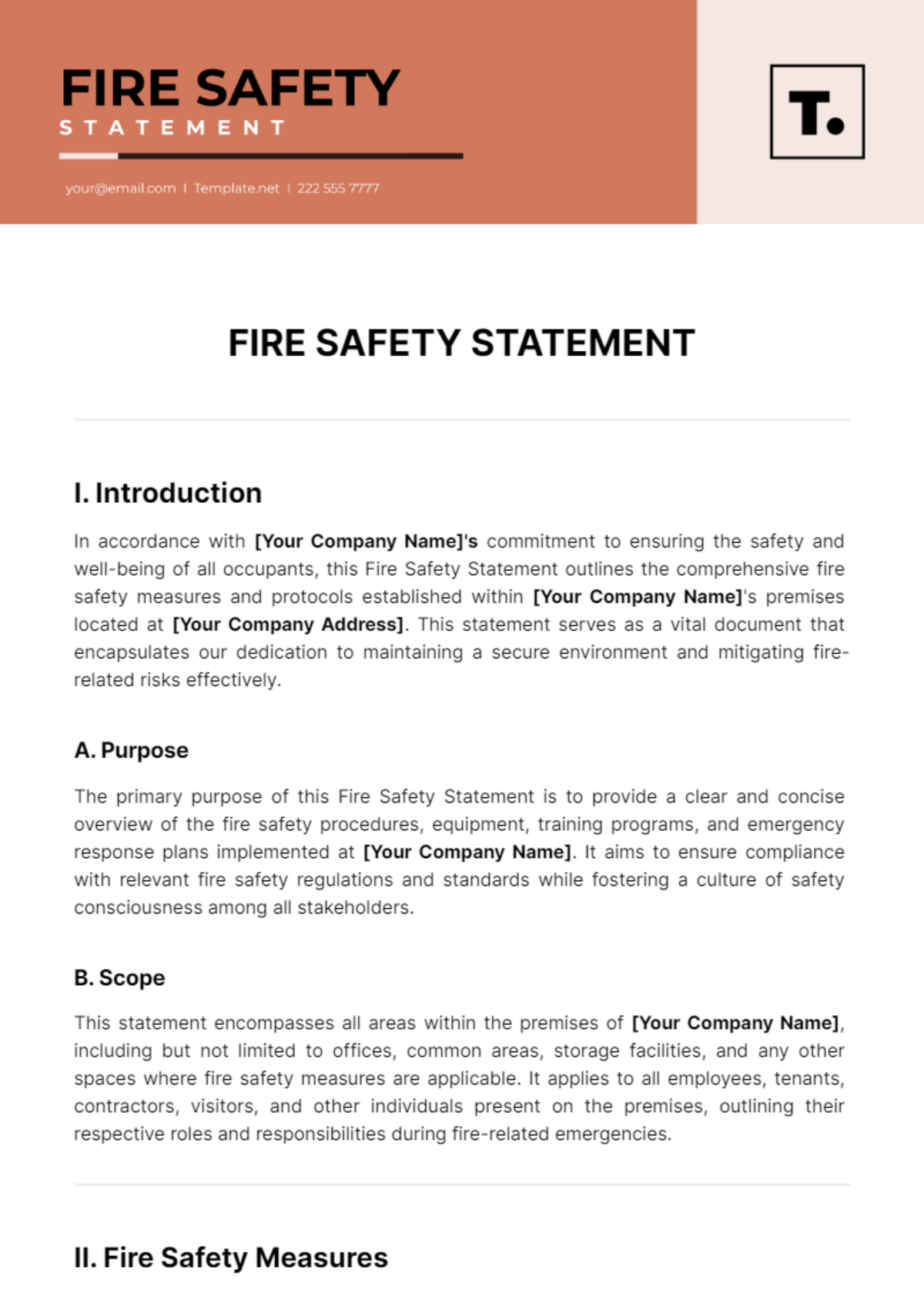
I. Introduction
In accordance with [Your Company Name]'s commitment to ensuring the safety and well-being of all occupants, this Fire Safety Statement outlines the comprehensive fire safety measures and protocols established within [Your Company Name]'s premises located at [Your Company Address]. This statement serves as a vital document that encapsulates our dedication to maintaining a secure environment and mitigating fire-related risks effectively.
A. Purpose
The primary purpose of this Fire Safety Statement is to provide a clear and concise overview of the fire safety procedures, equipment, training programs, and emergency response plans implemented at [Your Company Name]. It aims to ensure compliance with relevant fire safety regulations and standards while fostering a culture of safety consciousness among all stakeholders.
B. Scope
This statement encompasses all areas within the premises of [Your Company Name], including but not limited to offices, common areas, storage facilities, and any other spaces where fire safety measures are applicable. It applies to all employees, tenants, contractors, visitors, and other individuals present on the premises, outlining their respective roles and responsibilities during fire-related emergencies.
II. Fire Safety Measures
A. Fire Detection and Alarm Systems
Installation of state-of-the-art smoke detectors and fire alarm systems in strategic locations throughout the premises.
Regular testing, maintenance, and inspection of fire detection equipment to ensure optimal functionality and early detection of potential fire hazards.
Integration of fire alarm systems with central monitoring stations for prompt notification and response to fire incidents.
B. Emergency Evacuation Procedures
Development and dissemination of clear and easily understandable evacuation plans and exit routes, prominently displayed in designated areas.
Conduct regular fire drills and evacuation exercises to familiarize occupants with emergency procedures and evacuation routes.
Appointment of designated evacuation wardens and marshals trained in emergency response protocols and evacuation coordination.
C. Fire Suppression Systems and Equipment
Installation and maintenance of fire suppression systems such as sprinklers, extinguishers, and fire blankets in accordance with regulatory requirements.
Provision of adequate training to personnel on the proper use of fire extinguishers and other firefighting equipment.
Regular inspections and testing of fire suppression systems to ensure operational readiness and effectiveness in controlling fire outbreaks.
III. Training and Education
A. Fire Safety Training Programs
Implementation of comprehensive fire safety training programs for all employees, focusing on fire prevention, evacuation procedures, and use of firefighting equipment.
Training sessions are conducted by certified fire safety trainers, with periodic refresher courses to reinforce knowledge and skills.
Documentation of employee training records and participation in fire safety drills and exercises.
B. Awareness and Education Initiatives
Dissemination of fire safety awareness materials, including posters, brochures, and digital resources, to educate occupants on fire hazards and safety best practices.
Incorporation of fire safety topics into orientation programs for new employees, tenants, and contractors.
Collaboration with local fire departments and authorities for educational outreach programs and community engagement on fire safety.
IV. Emergency Response and Communication
A. Emergency Response Team
Establishment of an emergency response team comprising trained personnel responsible for coordinating and executing emergency procedures during fire incidents.
Designation of specific roles and responsibilities within the emergency response team, including incident command, communication coordination, and evacuation management.
Regular drills and simulations to test the effectiveness of emergency response protocols and enhance team readiness.
B. Communication Protocols
Implementation of robust communication protocols for reporting fire emergencies, including designated communication channels and emergency contact numbers.
Integration of communication systems to facilitate rapid dissemination of emergency alerts and instructions to all occupants.
Collaboration with local emergency services and authorities to ensure seamless coordination and response during fire-related incidents.
V. Compliance and Documentation
A. Regulatory Compliance
Adherence to all relevant fire safety regulations, codes, and standards applicable to [Your Company Name]'s premises.
Conducting regular inspections and audits to verify compliance with regulatory requirements and address any identified deficiencies promptly.
Maintaining updated records of inspections, tests, maintenance activities, and corrective actions related to fire safety systems and equipment.
B. Documentation and Records Management
Documentation of this Fire Safety Statement, including revisions and updates, to reflect current fire safety practices and protocols.
Establishment of a centralized records management system for storing and accessing fire safety documentation, training records, and incident reports.
Review and revision of fire safety policies and procedures as necessary to reflect evolving risks, technologies, and regulatory changes.
VI. Conclusion
This Fire Safety Statement represents [Your Company Name]'s steadfast commitment to prioritizing fire safety and emergency preparedness within our premises. By adhering to the guidelines and protocols outlined herein, we aim to create a secure environment that safeguards lives, property, and business continuity. Continuous monitoring, training, and collaboration with stakeholders are integral to maintaining an effective fire safety program and ensuring a resilient response to fire emergencies.
For inquiries or further information regarding our fire safety measures, please contact:
[Your Name]
[Your Title]
[Your Email]
[Your Contact Number]
- 100% Customizable, free editor
- Access 1 Million+ Templates, photo’s & graphics
- Download or share as a template
- Click and replace photos, graphics, text, backgrounds
- Resize, crop, AI write & more
- Access advanced editor
Prioritize safety protocols with the Fire Safety Statement Template from Template.net. This editable template helps organizations communicate fire safety measures and procedures clearly. Customize content, emergency contacts, and instructions effortlessly using our AI Editor Tool. Strengthen emergency preparedness and compliance with a detailed Fire Safety Statement that ensures the safety of occupants, available exclusively on Template.net.
